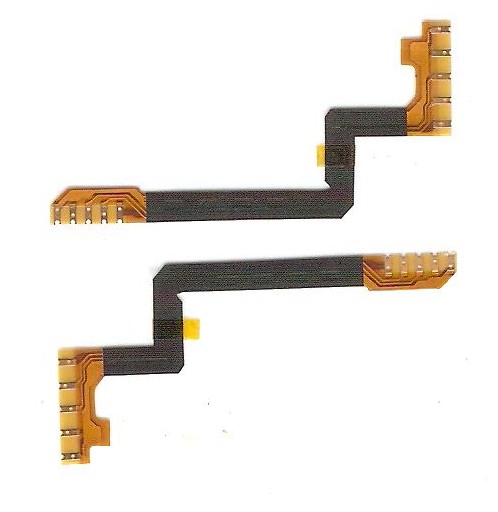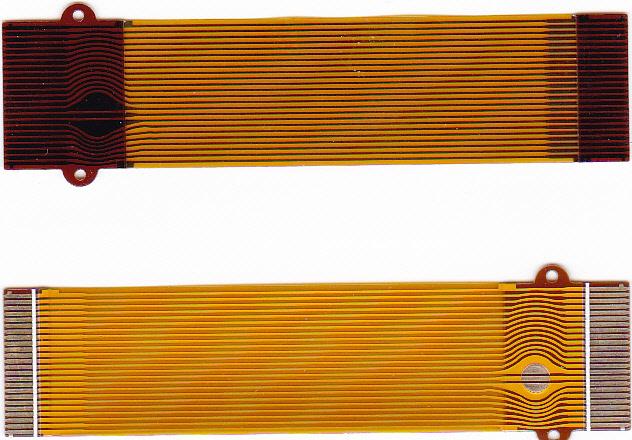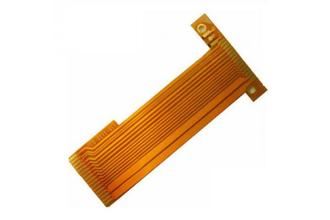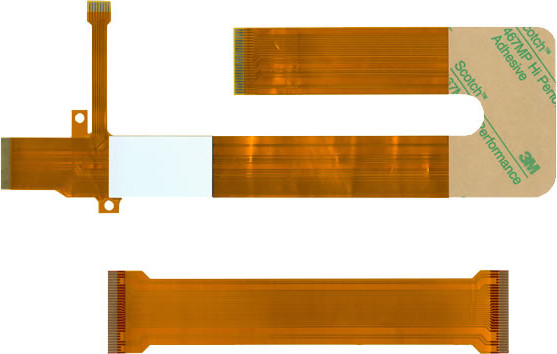
These flexible circuits have the base layer (polyimide) and a single copper conductor. Fabrication specs can be modified or tailored to your requirements. Single-sided flexible circuits maintain a small profile and great conformity so they are excellent for installations in very small spaces. If you want to optimize your space, a single-sided flexible circuit could be your answer.
Double Sided Flex
Double-sided flexible circuits have a different structure, making them more rigid and for use in applications where a single-sided flexible circuits design does not provide the necessary circuit density and layout. The double-sided flexible circuit features the base layer as a core between two adhered copper conductors.
Both of these circuits can be constructed to your specs with various materials and finishes.
[ezcol_1third]


 [/ezcol_1third] [ezcol_2third_end]
[/ezcol_1third] [ezcol_2third_end]
| Item | Parameter | |
| Numberof Layers | 1-6 | |
| Minimum Circuit Width | .12″ | |
| Minimum Circuit Clearence | .12″ | |
| Minimum Anular Ring | .003″ | |
| Minimum Hole | .009″ | |
| Minumum Copper Thickness | 18µm | |
| Maximum Copper Thicknes | 70µm | |
| Substrate Thickness | Polyimide | 12.5µm-50µm |
| Maximum Board Size | 20″ x 31″ | |
| Hole Tolerance | NPTH | +/- .002″ |
| PTH | +/- .003″ | |
| Circuit/Gap | Inner | .003″-.004″ |
| Outside | .003″-.005″ | |
| Outline Tolerance | +/-.003 | |
| Surface Finish | Immersion Gold | |
| Immersion Silver | ||
| Tin Plating | ||
| OSP | ||
[/ezcol_2third_end]